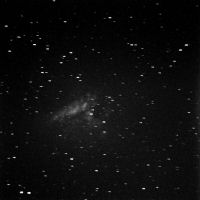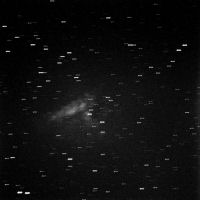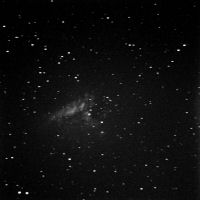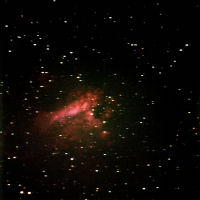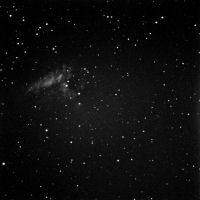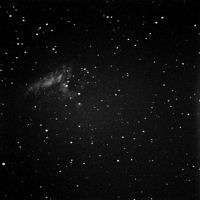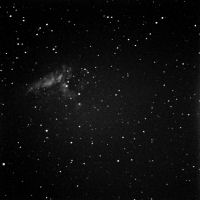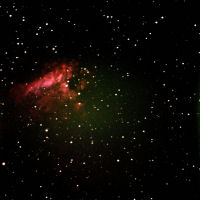Periodic Error Correction (PEC) Revisited
In March 2012 I drove out to the Hovatter Road site west of Phoenix to join the Saguaro Astronomy Club and East Valley Astronomy Club members for the annual Messier Marathon. This event occurs once a year and, if conditions are right, you can see all 110 Messier objects in one night. During the 2011 version of this event I was able to image nearly all of the Messier objects in a single night as seen here.
In 2012 however I ran into some unexpected problems. The major problem was that Periodic Error Correction either was not happening or the PEC values were terrible. I did not recognize this problem for what it was while out at the Messier Marathon Site. The scope I was using was one that had been in my observatory in New Mexico. It is a 10" Meade "classic" LX-200 f/6.3 scope. It had been bumped 4 different times by the roof closing while it was not "parked" in a safe position due to random failures of the Foster roof control board. I replaced it with another scope because of coma problems not because I thought it was damaged. I thought the clutch mechanisms of the LX-200 had handled the roof collision with no damage to the gears. However, I was not POSITIVE. So when the PEC problem presented itself I did not realize for sure what the problem was. I was afraid that the scope gears might have been damaged by the roof collisions.
I have always trained PEC very carefully and thought it was in good shape. I did not realize that PEC errors, if not corrected, are on the order of 30 or more ArcSeconds! Very significant for unguided imaging! To image all 110 Messier Objects, I was using a modified version of HandyAvi (I am the author so I have the source code...) which runs a script to take three 70 second unguided images of each Messier object. That just barely fits into the time alloted and allows for telescope slew time, exposure time and image download time.
Since the images are unguided, it is essential that PEC be working properly so that the stars do not trail and the images are not smeared by unwanted motion in Right Ascension.
When my script began producing images, they were nearly all smeared with significant star trails. I suspected PEC and deleted the values I had stored during the last training session. That did not improve anything! I had not realized that that with no Periodic Error Correction, the R.A. varies significantly, i.e., by the aforementioned 30 or more ArcSeconds! Enough to create really significant star trails in the f/6.3 and 2048x2048 imaging chip I was using. That combination gives a resolution of about 1.3 ArcSeconds per pixel so a 30 ArcSecond error in Right Ascension translates to a 30/1.3 or 23 pixel star trails/image smears. you can see these in the first row of images below. The second row below shows the same object imaged after PEC training. PEC training, according to what I have read, cannot be perfect so there are still tiny star elongations but they are not disastrous and lead to a reasonably decent stacked image. The stacked images are shown below in the 5th column. No additional processing was done to either after stacking in Maxim DL. The second stacked image is clearly more sharply defined than the first and the star trails are essentially gone.
How did I train PEC?
I set up the scope in the backyard. I polar aligned VERY CAREFULLY. It was as near perfect as possible. This is important because you want your training session to be responding ONLY to the worm gear variations, not the behavior of the telescope's tracking systems.
Then I used Maxim DL to set up autoguiding on a star of Magnitude 6.0 or so centered in the image field. I carefully made sure that autoguiding was calibrated as well as possible. I selected an exposure time of 0.1 seconds. Then I started guiding. I looked at the X and Y errors to see how guiding was going. The X errors (Right Ascension) showed the Periodic Error by requiring positive or negative corrections in the 4 to 5 or more pixel range as time progressed. The Y errors showed the Declination errors. These were purely due to atmospheric seeing so I could judge seeing and hopefully find a good seeing time period during which to train PEC. I also used the Mesa Clear Sky Chart (http://cleardarksky.com/c/MesaAZkey.html?1) to tell me when good seeing might be likely.
Then when seeing seemed to be good and guiding was working properly, I went out to the scope control pad and entered SMART->Learn to begin training. After that completed (less than 16 minutes) I entered SMART->Update to do one update of the PEC data so that it is using the previously "Learned" data during the update so that the errors are fewer and hopefully will average out...
I did the above four different times during the night until I finally got what I considered to be good results based on 70 second test images.
I do not plan to redo the training anytime soon and probably never hopefully... :-) What is in there now is pretty good and it will stay there.
